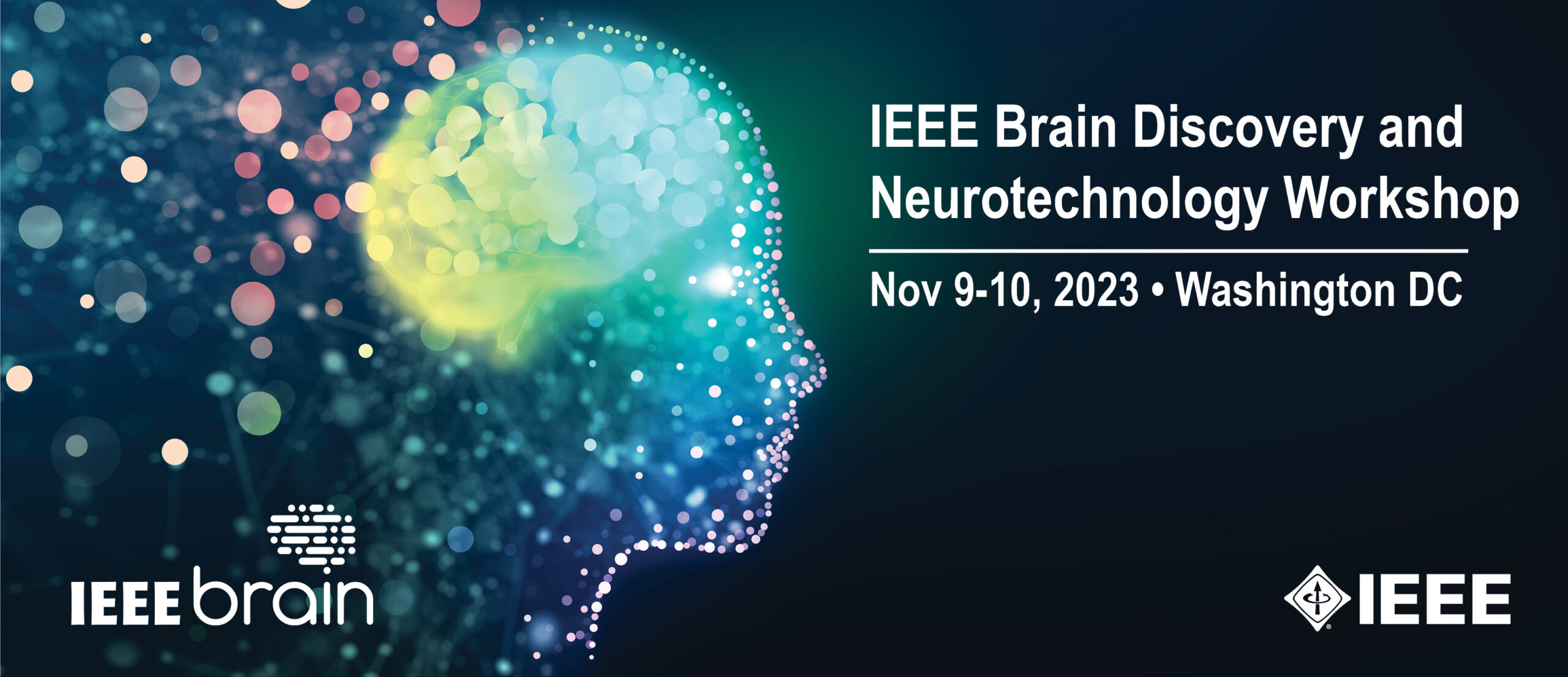IEEE Brain Discovery and Neurotechnology Workshop Tracks
Submissions for poster presentations in each track are invited and should be submitted by September 27, 2023, through the workshop website. There will be a best presentation award in each of the three tracks. Guidelines for the submission of a one-page abstract (1000 words and an image/figure) will be forthcoming.
Emerging Neurotechnologies
In recent years a range of new neurotechnology innovations have emerged to enable neuroimaging and neural recording and interfacing at multiple scales in variety of settings—in the lab, in the clinic, and in the wild—including low-cost wearable electroencephalography (EEG), ultra-high density EEG, stereoelectroencephalography (sEEG), advanced functional near infrared spectrography (fNIRS) and functional magnetic resonance imaging (fMRI), functional ultrasound imaging (fUS), optically pumped magnetometer magnetoencephalography (OPM-MEG), neural lace, neural dust, stent-electrode recording arrays (stentrodes) and endovascular recording techniques, multielectrode arrays, elrctocorticographic (ECoG) arrays, and optogenetics among others. This session aims to present examples of the latest scientific studies involving a selection of these approaches and host a panel discussion about what is feasible within the next 5-10 years with these latest advances in neurotech and the major opportunities and challenges in deploying these technologies.
Machine Learning for Brain Discovery
Advances in noninvasive neuroimaging technology such as magnetic resonance imaging and magnetoencephalography, have enabled the study of both the healthy and disordered human brain with increasing temporal and spatial resolution. Neuroimaging data poses some unique challenges such as low signal-to-noise ratio, small sample size, and high dimensionality. Recent methodological advances in machine learning have enabled the analysis of brain data across multiple scales and modalities. Current challenges and problems of interest include development of interpretable deep learning architectures for learning from neural data; network neuroscience for functional/structural connectivity network analysis, i.e., brain connectomics, across time and subjects; variability of brain networks across subjects; multimodal data fusion; classification and prediction of health status or specific outcomes through biomarker identification. This session aims to present examples of the latest research in machine learning for brain data involving a selection of these approaches and host a panel discussion on challenges and opportunities, including the transition to clinical practice as well as to more applied domains thinking of applications such as preventive predictive actions.
Clinical Applications and Impact
The first demonstration of a technology for a clinical application with impact was deep brain stimulation for Parkinson’s disease. Interestingly, it took less than 25 years for this technology to become established with more than 80,000 patients having received an implant by 2010. Technologies that restore, replace, or enhance human nervous system function are emerging fast but few are used in daily clinical practice or at home. In this track, we will be presenting some of the most promising technologies that have broad clinical application prospects and discuss their remaining important challenges in the panel to follow. These include optogenetics-based therapies, where recent advances in optogenetic real-time monitoring and therapeutic interventions have opened up the possibility for providing a complementary treatment following brain injury; neuroprosthetics for the restoration of vision, hearing, or motor function; as well as neuromodulation devices such as brain-computer-interfaces.



